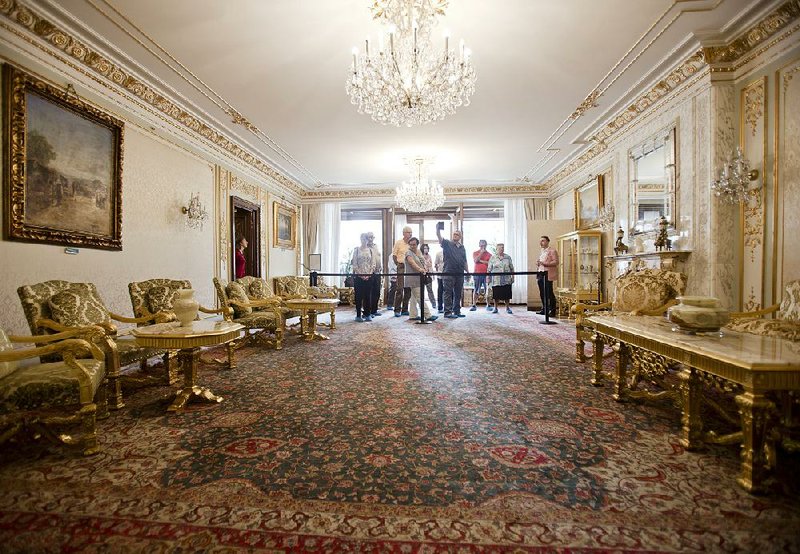BUCHAREST, Romania -- The Palace of Spring, the official residence of Nicolae Ceausescu, has opened its gilded doors to the public more than two decades after the dictator and his wife were shot dead during the 1989 c̶o̶m̶m̶u̶n̶i̶s̶t̶ anti-communist* revolt.
Ceausescu ruled Romania with an iron fist for 25 years and the palace, which features peacocks, a padded movie theater, mosaics and a gold bathroom, provides a window into the life of luxury and privilege he led with his wife, Elena. They were killed after a summary trial that found them guilty of "genocide" and ruining the economy, but fascination with the couple and their opulent lifestyle remains.
In the last decade of his rule, ordinary Romanians endured food rationing and electricity shortages. Ceausescu traveled extensively while most Romanians were not allowed to travel abroad.
Norbert Lendrich, 60, a German tourist visiting the palace on a recent Saturday, said it was good for "Romanians to see how they lived in that period and how decadently they lived. Decadence is the exact right word for this."
The palace boasts a staircase flanked with walls covered in small, disco-like gold tiles and gifts from world leaders adorn the home. Ceausescu's office has walls of intricately carved woodwork and a huge desk. There are sumptuous silk carpets everywhere.
Tickets cost 15 lei to 45 lei ($3.78 to $11.40) for a tour of the relatively small family palace, which is a fraction of the size of the giant Parliament Palace which Ceausescu built in the late '80s.
The palace, which opened on March 19, is "an important fragment in Romanian history, whether good or bad. Let's not forget that Ceausescu was one of the most influential communist leaders in Central and Eastern Europe," said Andrei Stancu, a guide.
There is pride in the fact that the furnishings were crafted in Romania and guides note that former U.S. President Richard Nixon once dined there.
The decor reflects the ostentatious style which was fashionable at the time, a mishmash of Neoclassicism and late Renaissance. In contrast, many Romanians lived in drafty, cramped, prefab concrete apartment buildings.
The palace was built after Ceausescu came to power in 1965 and served as the family's residence until 1989. It was extended so Ceausescu's parents and in-laws could move in.
An exhibit of family photos in an area which used to house the swimming pool reminds visitors of the late couple and their family. Also exhibited are items of the couple's clothes, which now look dated.
A single peacock and his mate roam the relatively modest garden. The bathroom has gold-plated taps, towel racks and gold shower fittings, and lashings of marble.
On the net: palatulprimaverii.ro.
Travel on 07/10/2016
*CORRECTION: Romanian dictator Nicolae Ceausescu and his wife were shot dead during the 1989 anti-Communist revolt in the country. This story incorrectly described the nature of the Romanian Revolution.
